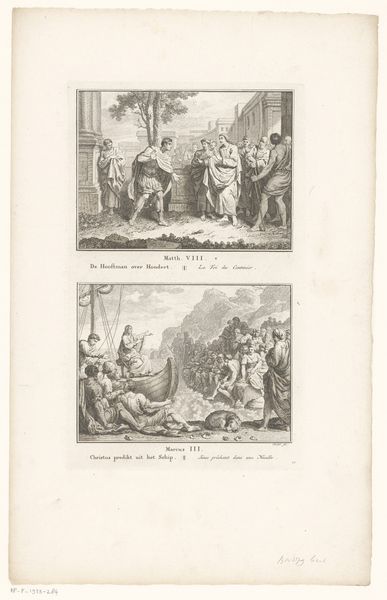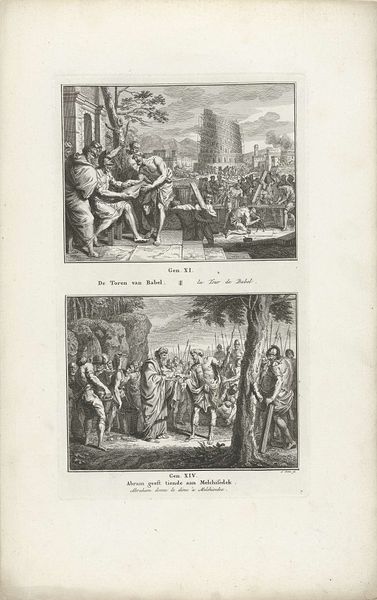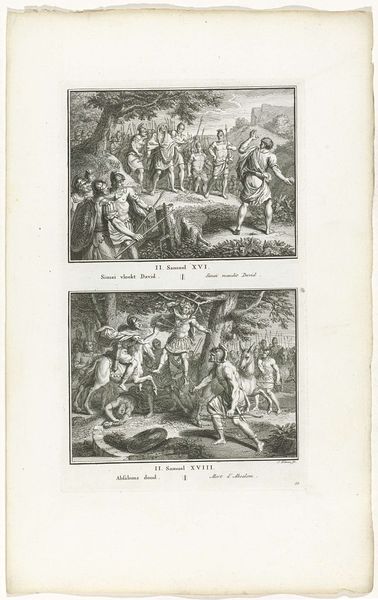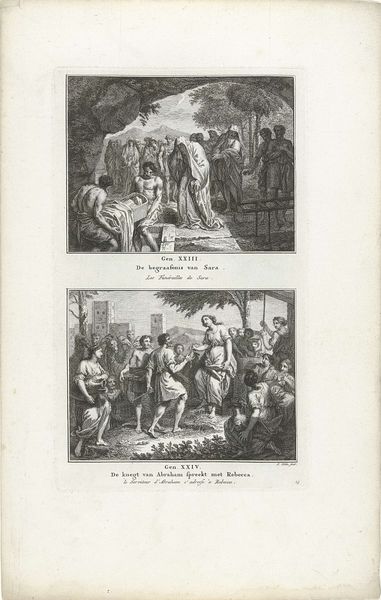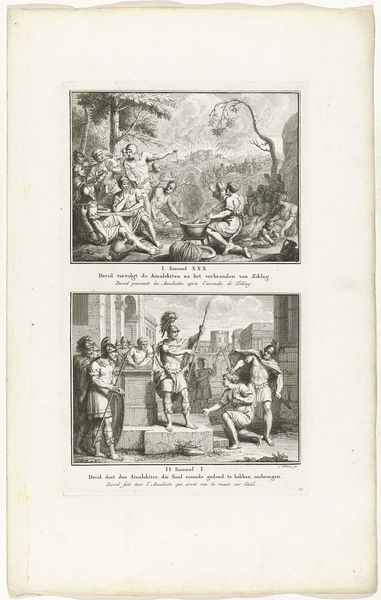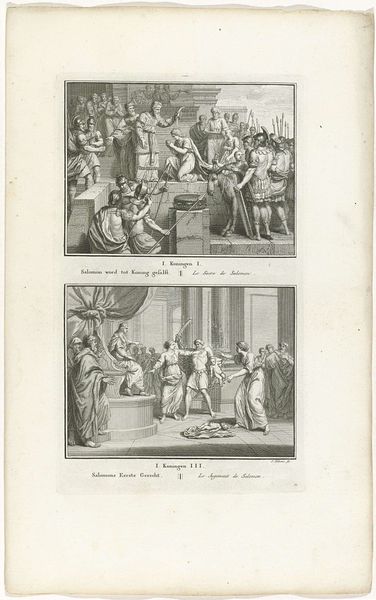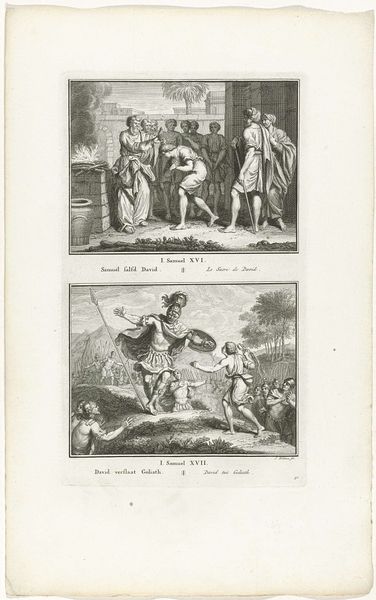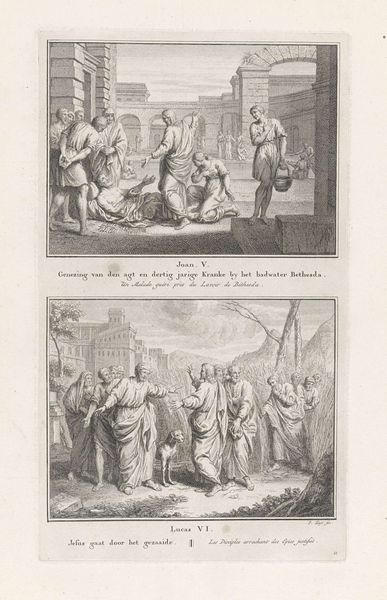
Dimensions: height 325 mm, width 194 mm
Copyright: Rijks Museum: Open Domain
Curator: Examining this engraving, "Zacharia wordt gestenigd en Nebukadn\u00e9zar verwoest Jeruzalem," made by Jacob Folkema in 1791, it is striking to consider the labor invested in producing such detailed images. Editor: It really is incredibly detailed. The top image, depicting the stoning, is so graphic, while the lower scene of Jerusalem's destruction feels more distant, even impersonal. I’m wondering, what do you see when you look at this print? Curator: For me, this engraving speaks volumes about the production and consumption of historical and religious narratives during that era. It highlights a specific materiality that can provide a social commentary on craft versus art; engraving as a means to democratize images allowed greater circulation, influencing public perception of biblical tales and distant events. Note the precise lines etched to create tone and texture; this reflects skilled artisanry. But what socio-economic functions did such prints fulfill at this time, what sort of consumption practices sustained them? Editor: I hadn't thought about it as a commodity before. So, you're saying the choice of engraving – a process allowing for multiples – makes it relevant not just artistically but economically and socially? Curator: Precisely! Consider how the story is being distributed to a broader audience; it is not just about religious or historical interpretation, it is tied to evolving media technologies and broader political trends as well. Editor: That makes a lot of sense. I guess I was so focused on the graphic depictions and the story that I missed seeing it within its own production context. It certainly offers a new perspective on how history and faith were disseminated. Curator: And perhaps it questions the boundaries of "high art" as a craft tradition becomes central to shaping and circulating cultural narratives. Considering the material conditions gives these old engravings an unexpectedly modern significance. Editor: Thank you; seeing it in that material context definitely sheds new light on it for me.
Comments
No comments
Be the first to comment and join the conversation on the ultimate creative platform.
